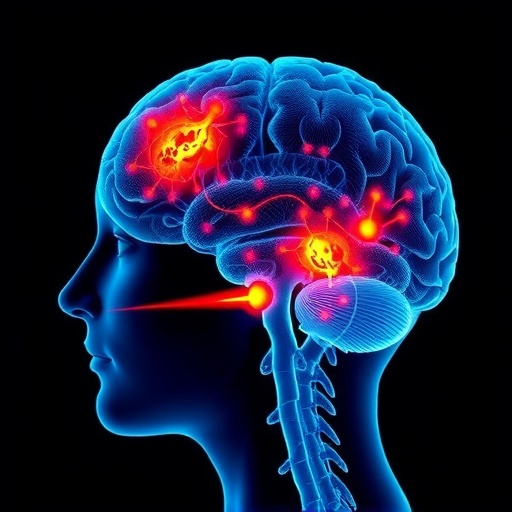In the context of contemporary healthcare, understanding the barriers that hinder effective prevention and control of cardiovascular diseases (CVD) is crucial for health policymakers and practitioners. A recent qualitative study conducted in Iran sheds light on the intricate problems existing within the health system that undermine efforts to tackle this pressing public health concern. The findings suggest a multifaceted approach to address these barriers and offer vital insights into improving cardiovascular health outcomes.
Cardiovascular diseases remain one of the leading causes of morbidity and mortality globally, contributing significantly to the burden of non-communicable diseases. In Iran, the rising incidence of CVD emphasizes the necessity for comprehensive public health strategies. However, despite heightened awareness and advancements in medical technologies, numerous challenges persist that prevent effective healthcare delivery for CVD. The recent investigation, led by Mansouri and colleagues, seeks to unpack these challenges through in-depth interviews with various stakeholders in the Iranian healthcare system.
The study reveals systemic issues characterized by insufficient infrastructure, limited access to essential services, and inadequate patient education. One of the major observations made by the research team is the lack of a coordinated approach among healthcare providers. Fragmentation in services results in patients experiencing disjointed and often ineffective care pathways. This disarray not only impedes timely intervention but also exacerbates patients’ frustrations when navigating the healthcare system for cardiovascular-related issues.
Furthermore, the findings highlight the notable absence of comprehensive educational programs aimed at both healthcare professionals and patients. Healthcare workers reported feeling underprepared to manage CVD effectively due to insufficient training and resources, which translates to a gap in knowledge that can adversely affect patient outcomes. Simultaneously, patients voiced their struggles in understanding risk factors, symptoms, and the importance of routine check-ups, indicating a dire need for initiatives that enhance health literacy amongst the population.
Financial constraints also play a critical role in the accessibility of cardiovascular care in Iran. High out-of-pocket expenses deter individuals from seeking timely medical attention or adhering to prescribed treatments. The economic burden is felt especially acutely by lower socioeconomic groups, exacerbating health disparities and leading to a significant percentage of patients receiving care only in advanced stages of CVD. This delay in seeking help ultimately diminishes the efficacy of available treatments and increases mortality rates.
Another striking barrier is the perception of CVD within the community. The study indicated that cultural beliefs and societal stigmas associated with heart diseases further complicate the health-seeking behavior of individuals. Many people view CVD as a condition that affects only the elderly, leading to a misinformed sense of invincibility among younger populations. This misconception highlights the pressing need for public health campaigns that shift perceptions and emphasize the importance of prevention across all age groups.
Moreover, the role of policy and governance in shaping CVD prevention efforts should not be overlooked. Insufficient political will and lack of prioritization of cardiovascular health by policymakers often lead to the inadequacy of resources allocated for prevention and treatment programs. Additionally, we see that governmental health initiatives focused on CVD are often underfunded and lack comprehensive frameworks that involve all essential stakeholders, resulting in ineffective execution at the community level.
The qualitative study also points to the significance of community engagement as a constructive way forward. Engaging local communities in crafting tailored health interventions can empower citizens and potentially foster a more supportive environment for those at risk of cardiovascular diseases. Tailored programs that resonate with the community’s unique cultural, social, and economic context can lead to improved participation in prevention activities and ultimately better health outcomes.
Importantly, technology’s role in tackling health system barriers cannot be overstated. The integration of telehealth services and mobile health applications offers promising avenues for reaching patients who are traditionally underserved or reluctant to utilize healthcare facilities. Such technological solutions can bridge the gap between healthcare providers and patients, creating efficient channels for education, monitoring, and follow-up care concerning cardiovascular health issues.
Information systems designed to monitor and analyze cardiovascular health trends can also bolster decision-making processes at multiple levels of the health system. By harnessing data analytics, healthcare administrators can identify areas needing immediate attention and allocate resources accordingly to improve CVD outcomes across various demographics.
The implications of this research extend beyond Iran’s borders. Other nations facing similar challenges in CVD care could glean valuable lessons from the barriers identified in this study. Collaborative efforts focusing on adapting successful strategies from one context to another can foster a more global understanding of effective cardiovascular disease prevention and control mechanisms.
A multi-stakeholder approach that includes healthcare providers, policymakers, community leaders, and patients is pivotal. Only by fostering collaboration can the complex web of barriers to cardiovascular disease prevention and control be addressed comprehensively. Future efforts should prioritize innovative models of care, community education, and a commitment to supporting health systems that can deliver timely, effective cardiovascular interventions to those who need them most.
In summary, the study conducted by Mansouri et al. brings to the forefront the pressing health system barriers that hinder successful cardiovascular disease prevention and control in Iran. By addressing these multifactorial challenges through coordinated efforts, community engagement, and innovative solutions, there lies the potential for significantly improved health outcomes in cardiovascular disease management.
Subject of Research: Health system barriers to cardiovascular disease prevention and control in Iran
Article Title: Health system barriers to cardiovascular disease prevention and control in Iran: a qualitative study
Article References:
Mansouri, A., Amini-Rarani, M., Bahrani, S. et al. Health system barriers to cardiovascular disease prevention and control in Iran: a qualitative study.
BMC Health Serv Res 25, 1508 (2025). https://doi.org/10.1186/s12913-025-13674-w
Image Credits: AI Generated
DOI: https://doi.org/10.1186/s12913-025-13674-w
Keywords: cardiovascular disease, Iran, health system barriers, qualitative study, healthcare access, public health
Tags: access to essential health servicesbarriers to healthcare deliverycardiovascular disease prevention in Irancoordinated healthcare approachesfragmentation of healthcare serviceshealthcare system challenges in Iranimproving cardiovascular health outcomesinfrastructure issues in Iranian healthcarenon-communicable diseases in Iranpatient education on cardiovascular diseasespublic health strategies for cardiovascular healthqualitative study on CVD





